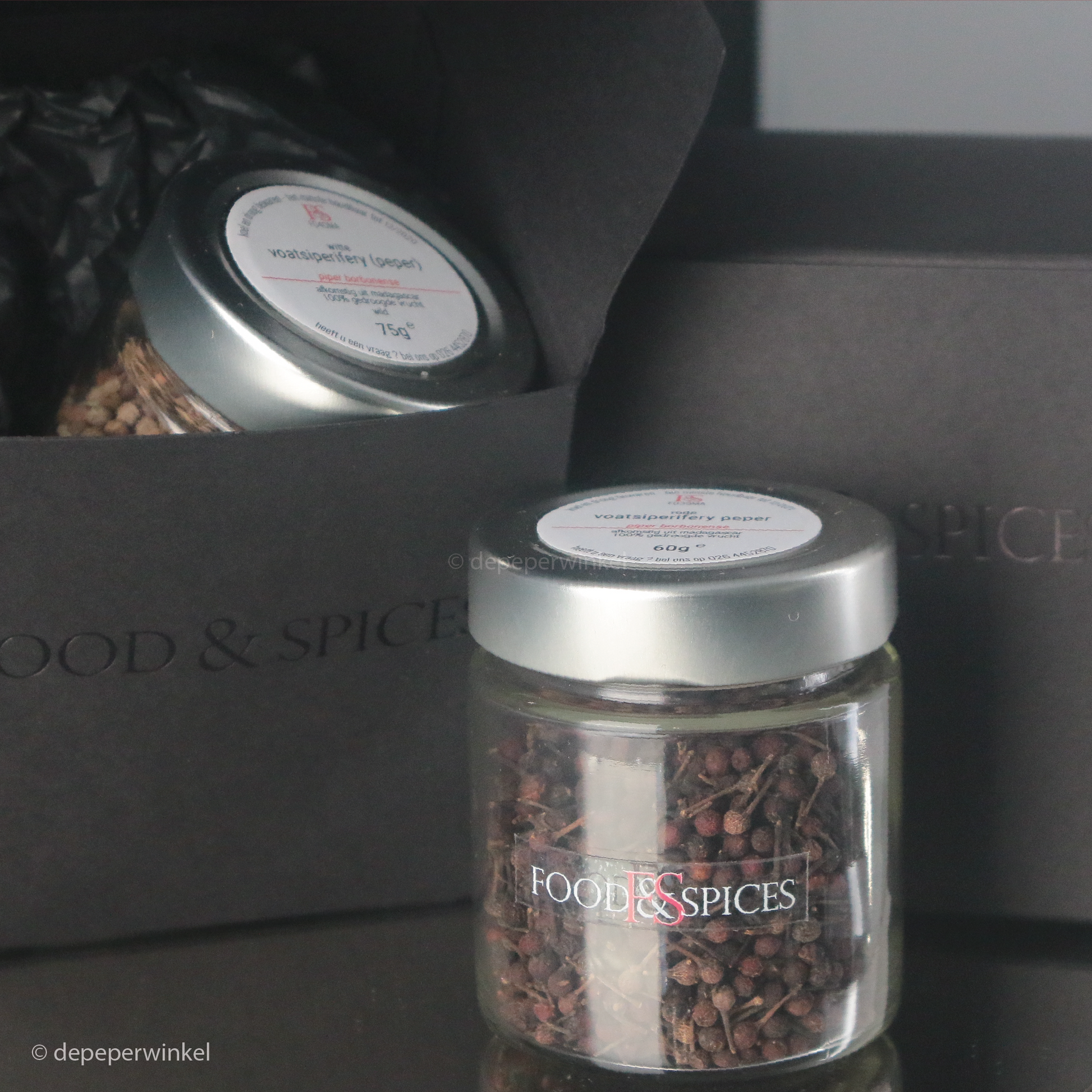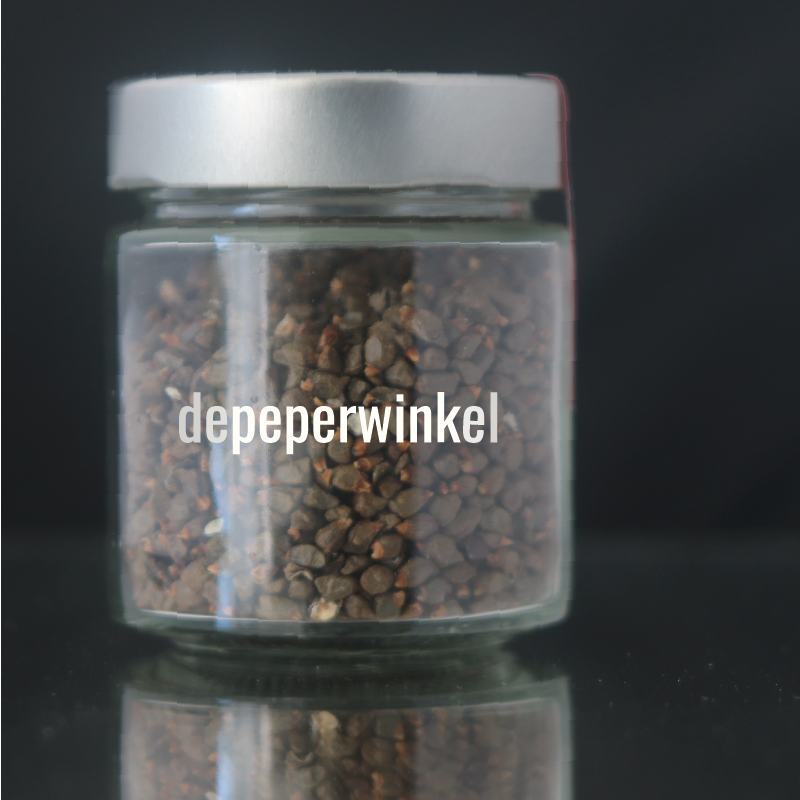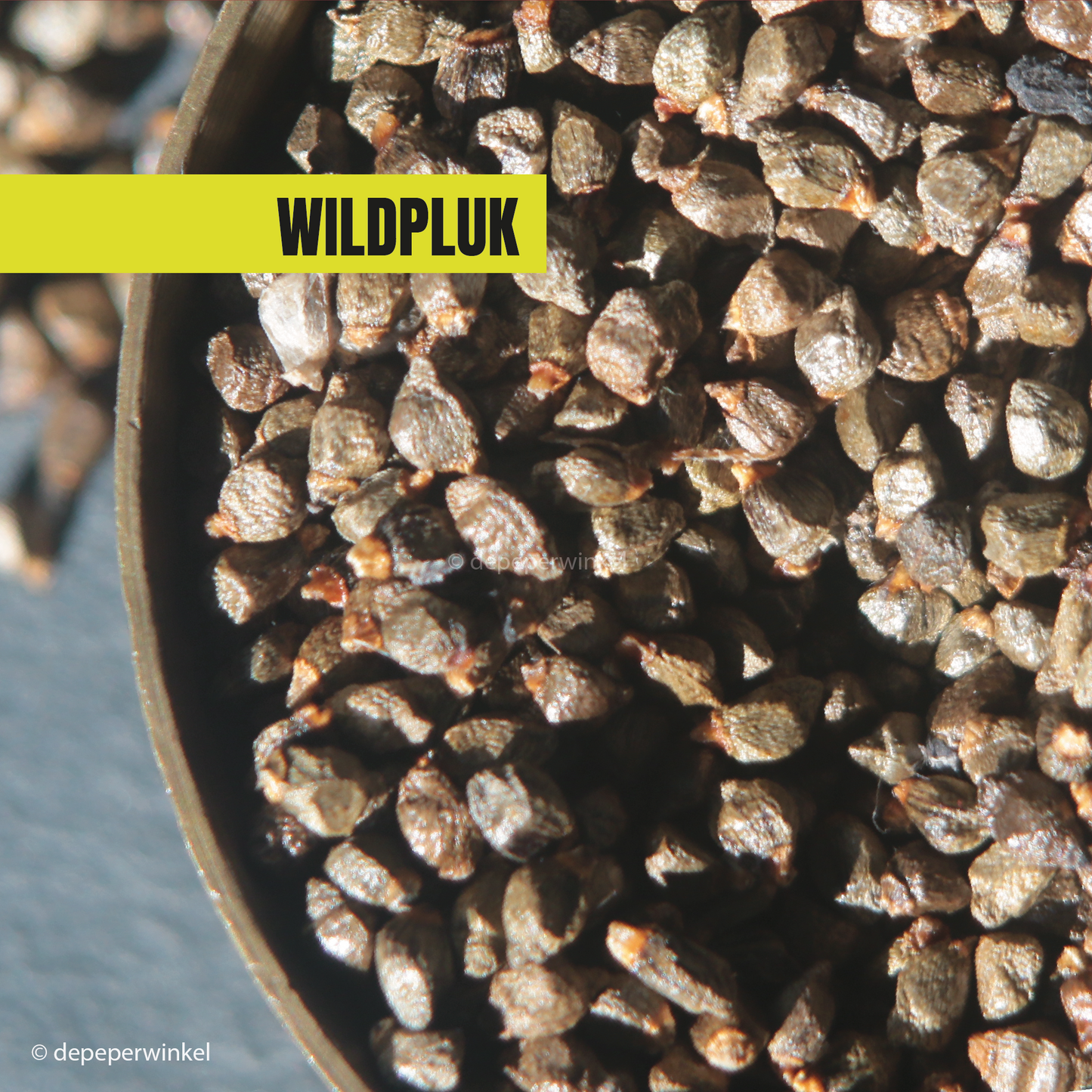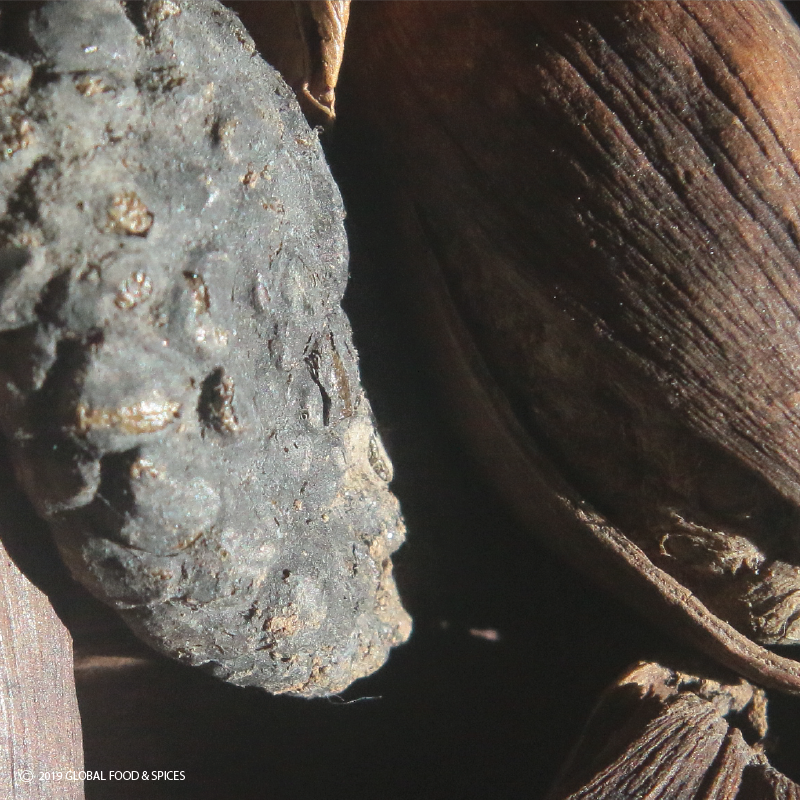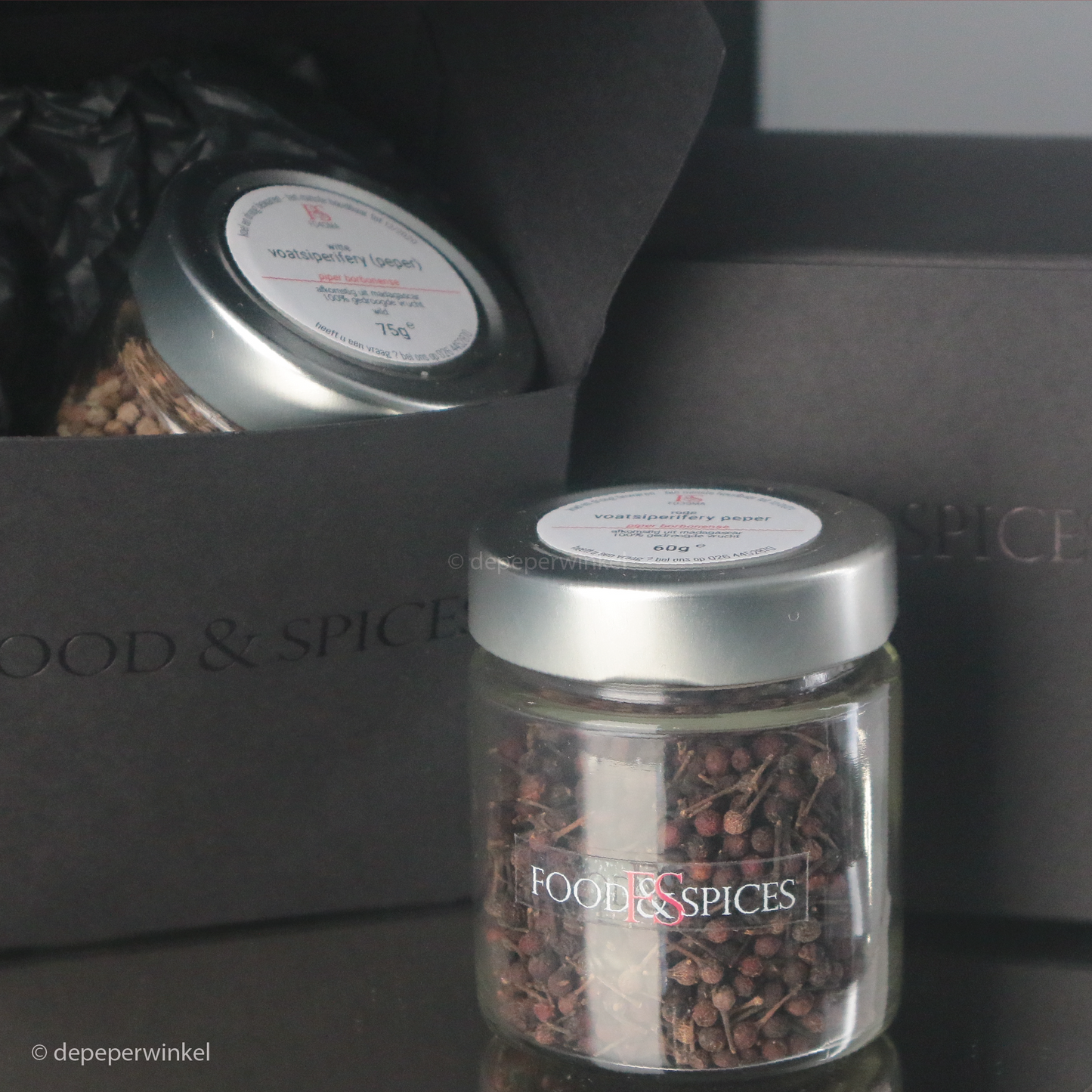depeperwinkel
Mbongo (grain)
Mbongo (grain)
In stock
Unable to load availability for pickup
From West Africa comes Mbongô (mbongo), also called alligator pepper after its appearance. The dried seed pod contains a 'scaled' palette of tiny seeds, reminiscent of grains of paradise, encased in fragile, hardened jelly.
The mbongô grows on a two-meter-high shrub from the ginger genus, which, like many ginger species, has rhizomes. Just above the ground it forms trumpet-shaped, green flowers, which seem to come straight from the ground. They quickly fall off to make room for 10 cm large fruits.
These are seed pods, filled with dozens of seeds in a jelly-like liquid. After drying, the seeds can be freed from their capsule. This is done exclusively by hand. The seeds are about 3 mm in size, shiny and deep brown. Strangely enough, they have little or no odor, but all the more so after they have been ground.
Our Mbongô comes from Cameroon, where the spice is used in many famous dishes, such as Mbongô tchòbi, fish in black sauce. The spice is also used in other West African countries, especially in pepper soup.
Related spices include grain of paradise (Aframomum melegueta) and Madagascar cardamom (Aframomum angustifolium). The former is fairly common, the latter very rare.
Mbongô is one of the four local peppers in the famous Nigerian pepper soup nwo-nwo, along with ashanti pepper (uziza), selim pepper (uda ewentia) and gourd nutmeg (ehuru).
Smell and taste
The seeds have a delicious, almost overwhelming fresh scent of lemongrass (sereh), which remains hidden until the seeds are ground. They are quite peppery, like paradise grains. In terms of composition, the essential oil in mbongô is similar in many ways similar to cardamom, and also to ginger. Some of the flavor and scent determining essential oils in mbongô are:
- citronellol, the scent of lemongrass
- afromodial, the unsaturated dialdehyde that causes the sharpness,
- 1,8-cineole, eucalyptol, the refreshing taste of mint
- β-pinene, woody pine odor, as in cumin, pine (cone), juniper and hemp,
- α-terpineol, sweet floral scent like lilac.
- sabinene, responsible for the woody, camphor-like taste of black pepper and nutmeg, among other things
- β-myrcene, spicy aroma, with notes of fruits (mango, grape, peach) and mint,
- α-caryophyllene (humulene), hops, as in beer and cannabis
- d-limonene, citrus, orange aroma
Usage
Mbongô can literally be used in any dish, even in cooked rice or pasta, but preferably in a palette of West African spices and herbs such as calabash nutmeg, Ashanti pepper, grain of paradise, selim pepper, cubeb pepper, ginger, garlic nut and African mint. Each and every one of them flavour enhancers from the fascinating West African gastronomy.
Grind - or mortar - the seeds shortly before use, after first roasting them briefly.
Features:
- 100% seeds of the Aframomum danielli
- origin: Central Cameroon
Assortment
- available in glass, stand-up pouch and test tube from 10 ml
- larger quantities on request
Gift wrapping
- The jar is available in a tasteful gift packaging, consisting of a cube box filled with black tissue paper
- For an overview of our gift packaging, please refer to the gift packaging section
General advice
- grind the pepper at the last moment to make the most of the aroma - preferably roast it briefly first
Save:
- save your mbongo pepper in closed packaging
- preferably store in a dark, dry and cool place
- at least good until June 2027 (06-2027)
- This expiration date is an indication
Batch number
The batch number helps us trace which supply an item originates from. It is stated on the packing slip and the invoice






